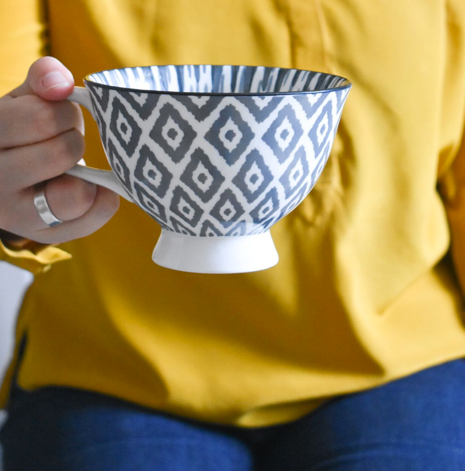You know you’re making enough to pay the bills because, well, you’re paying the bills. But do you know whether you’re making a profit on each order? And how much is a good profit margin for a small creative business, anyway?
In this brave new world of online selling, especially for designer makers and small creative businesses, there isn’t much out there about what makes a good profit margin. It’s a bit like the salary question – not many people talk about it.
And just like when talking about salary, a “good” profit margin means different things to different people. Big enormous retailers, for example, look for 40% profit, if not 60-80%. There’s the widely known fact that popcorn is one of the most profitable products ever, with about 97% profit margin – the cost of corn and the heat to pop it being so small.
Anyway, for small creative businesses, I’m going to come out and say it: if you’re not making at least a 25% profit margin on each product, you need to increase your price or decrease your costs. Let me repeat that:
25% is a great minimum profit margin. Aim for that.
So how do you calculate profit?
In simple terms, profit is the total price the customer pays, minus all your raw materials, packaging, postage costs, commission charges, and – where applicable – VAT. I recommend doing this for every single product, so that you’re confident that you’re making a profit on each order.
For a more detailed spreadsheet and approach to calculating your pricing, register for Pricing for Profit (and Sanity!) here.
Other considerations
One of the things I feel really strongly about is adding in the cost of your time to your profit calculations. Even if you’re not paying yourself, and simply take profit as your payment, it’s really important to know whether your products themselves are profitable, with your time factored into the price. Checking this will ensure your profit is true profit, and it’ll help you to decide whether to employ someone – you’ll know how much their time should cost, and whether it’s worth it.
And there are other costs you’ll need to factor in beyond your per product costs, such as rent and bills. I prefer to do this after you’ve calculated the per product profitability – keeps it simple. So make sure you look at how many items you’ve sold this year, how many you’re likely to sell, and times that by your per product profit. Then take off your annual bills, rent and other costs, and see your final profit for the year.
Need more help?
Pricing and profitability are absolutely key to your business success. Check out Pricing For Profit to build skills for life.



hi Jenny
I have just paid for one of your non-vat profit spreadsheet calculators in my receipt it says vat profit calculator. Can I have the non vat one please. How do you send it?
Thanks Bev
Hi Bev, Thanks for paying for the spreadsheet! I’ve just sent it over for you – hope it helps! Jx
Hi!
I’ve just ordered the non-VAT version of this and my receipt also says VAT calculator. Can you please make sure that the non-VAT version is sent please?
Thanks!
Danielle
Hi Danielle, you should have received the correct spreadsheet last night! Jx